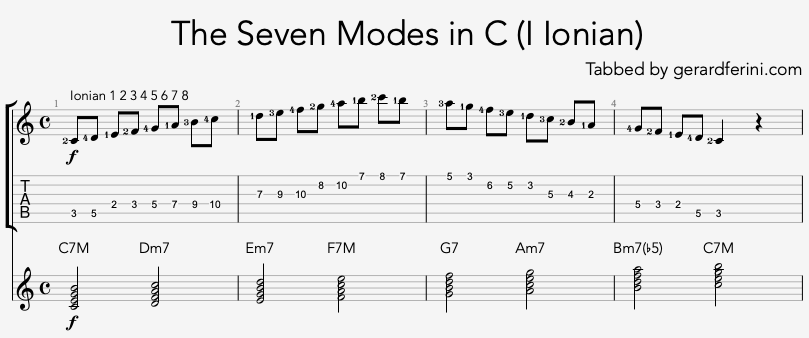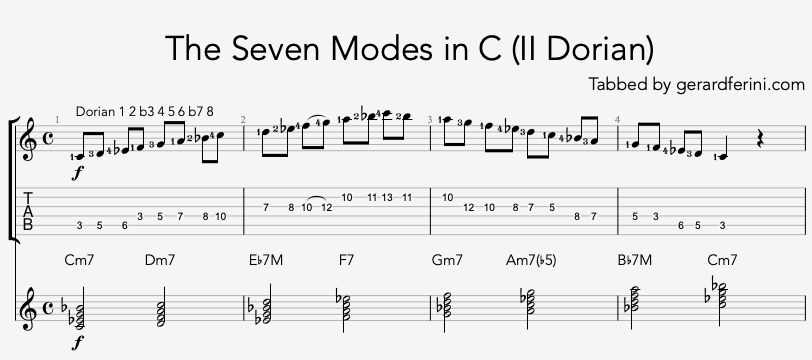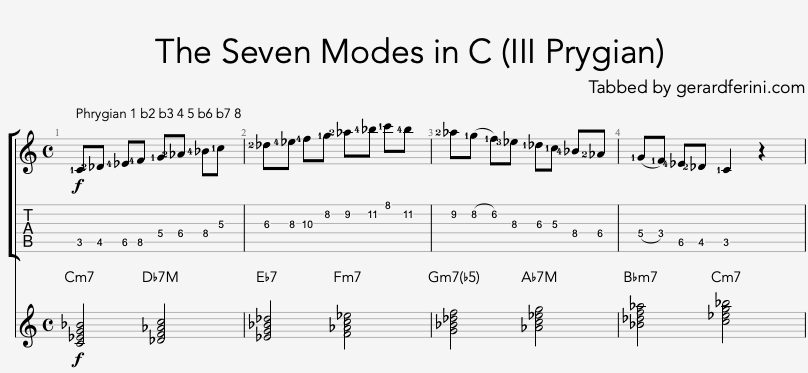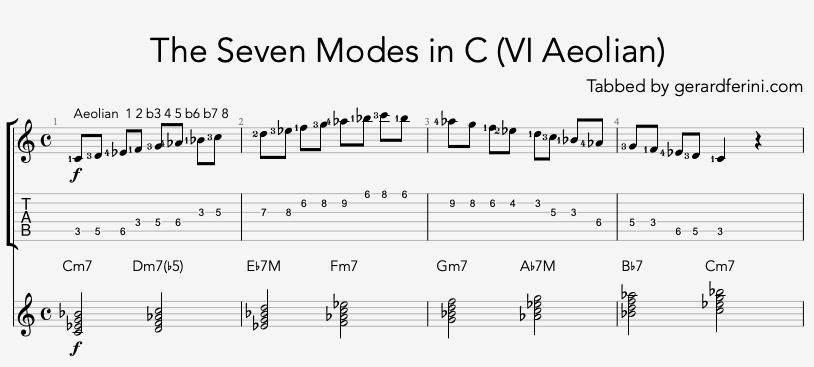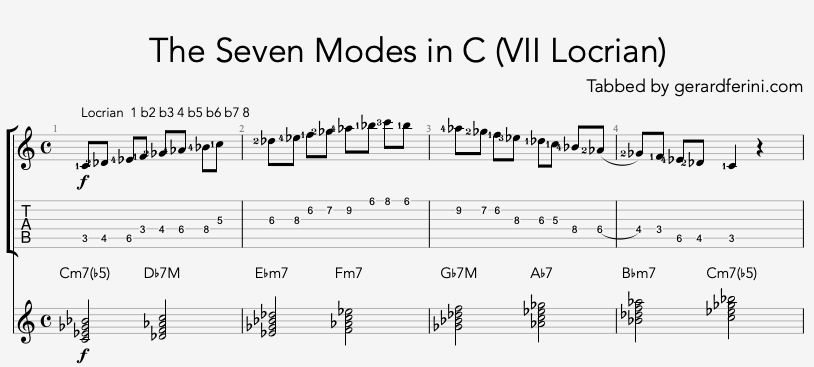How to Harmonize Modes
Diatonic Modal Chords and Guitar Scales
Ionian Mode (I)
In modern time and usage, the Ionian Mode is the same as the Diatonic Major mode.
Dorian Mode (II)
Some Dorian themes are based on a single chord and modulate on another l-7 placed above the first one. To avoid the monotony, due to the presence of a single chord, one often uses fourth voicing. "So what", by Miles Davis and "Impressions" by John Coltrane are composed this way. Please note that none of the modes below have a Major (V7) and thus no dominant seventh chords.
Phrygian Mode (lII)
The Phrygian mode is the old D mode in the Ancient Greek modes and has become the E mode in the middle age. Characteristic note= b2
Lydian Mode (IV)
Characteristic note c=#4
Mixolydian Mode (V)
The Mixolydian mode is the mode to be played with a Dominant 7 chord (V7). Same as the Ionian mode except for the lowered seventh (b7).
See also Circle of Fifths practise:
Aeolian Mode (VI)
The Aeolian mode is also called the natural minor mode (-Nat). It has no leading tone. So the (V) degree, can not be used as a dominant chord to resolve to the tonic. Its Tritone being placed between the degree (ll) and degree (VI) (D/Eb).



